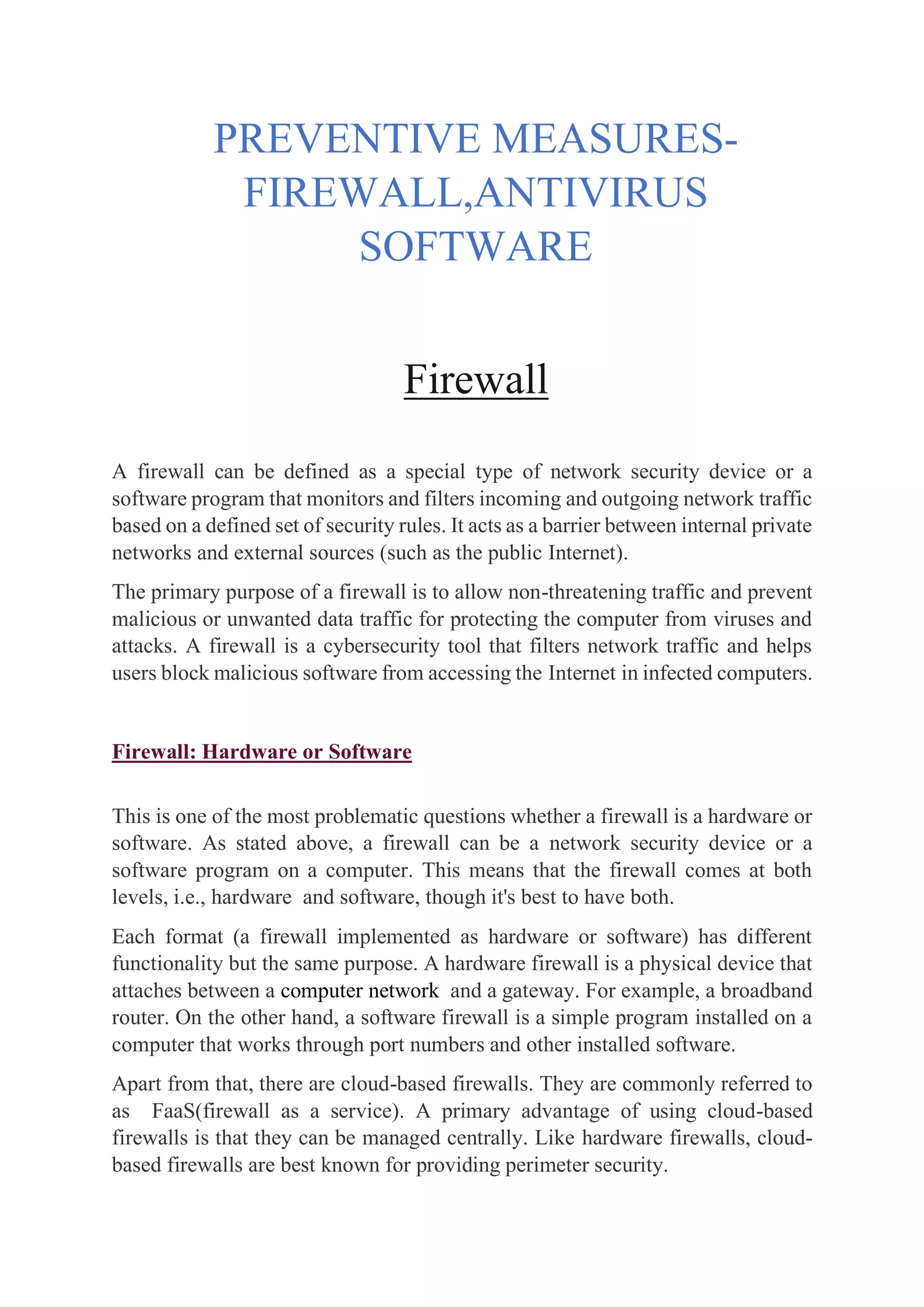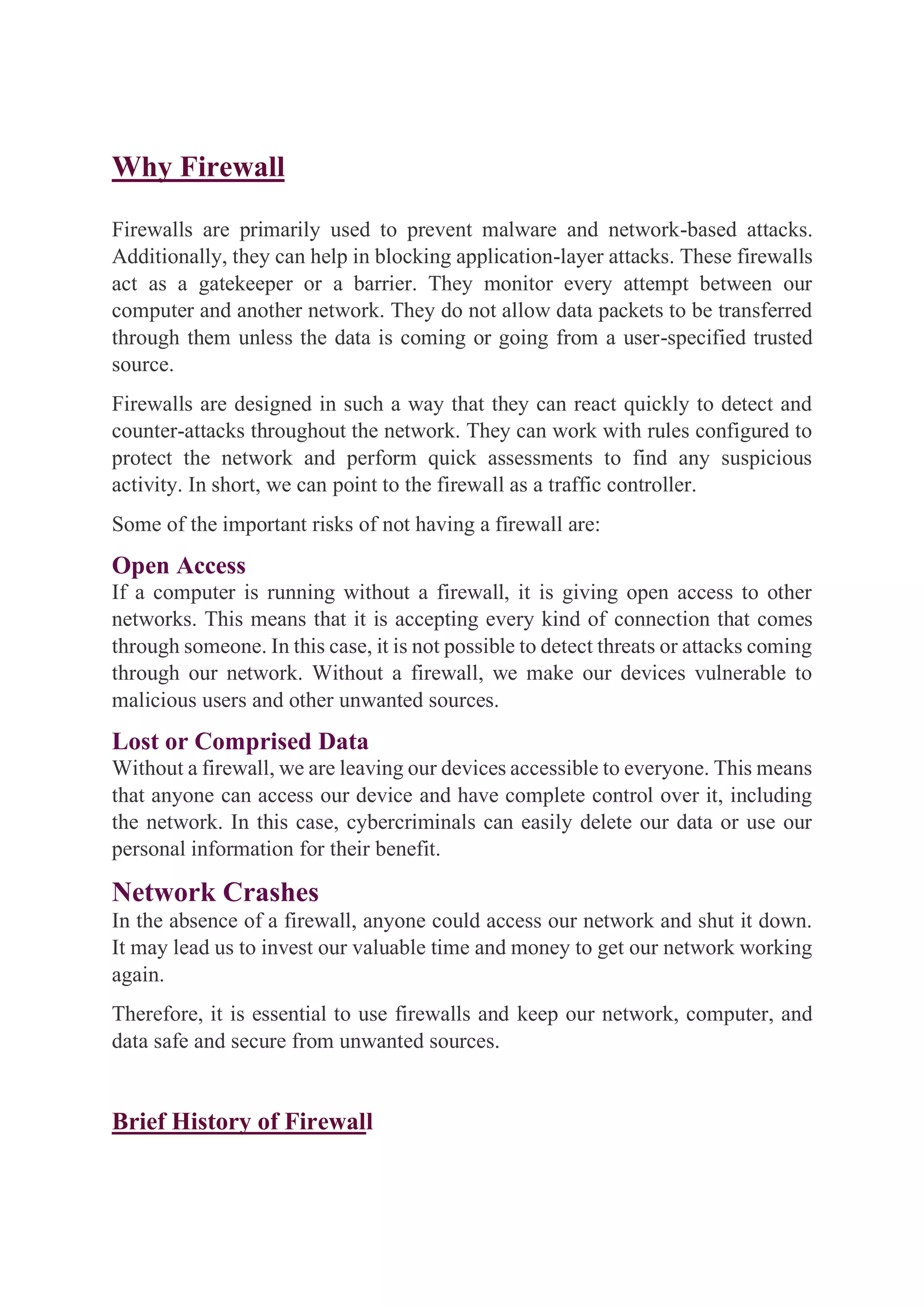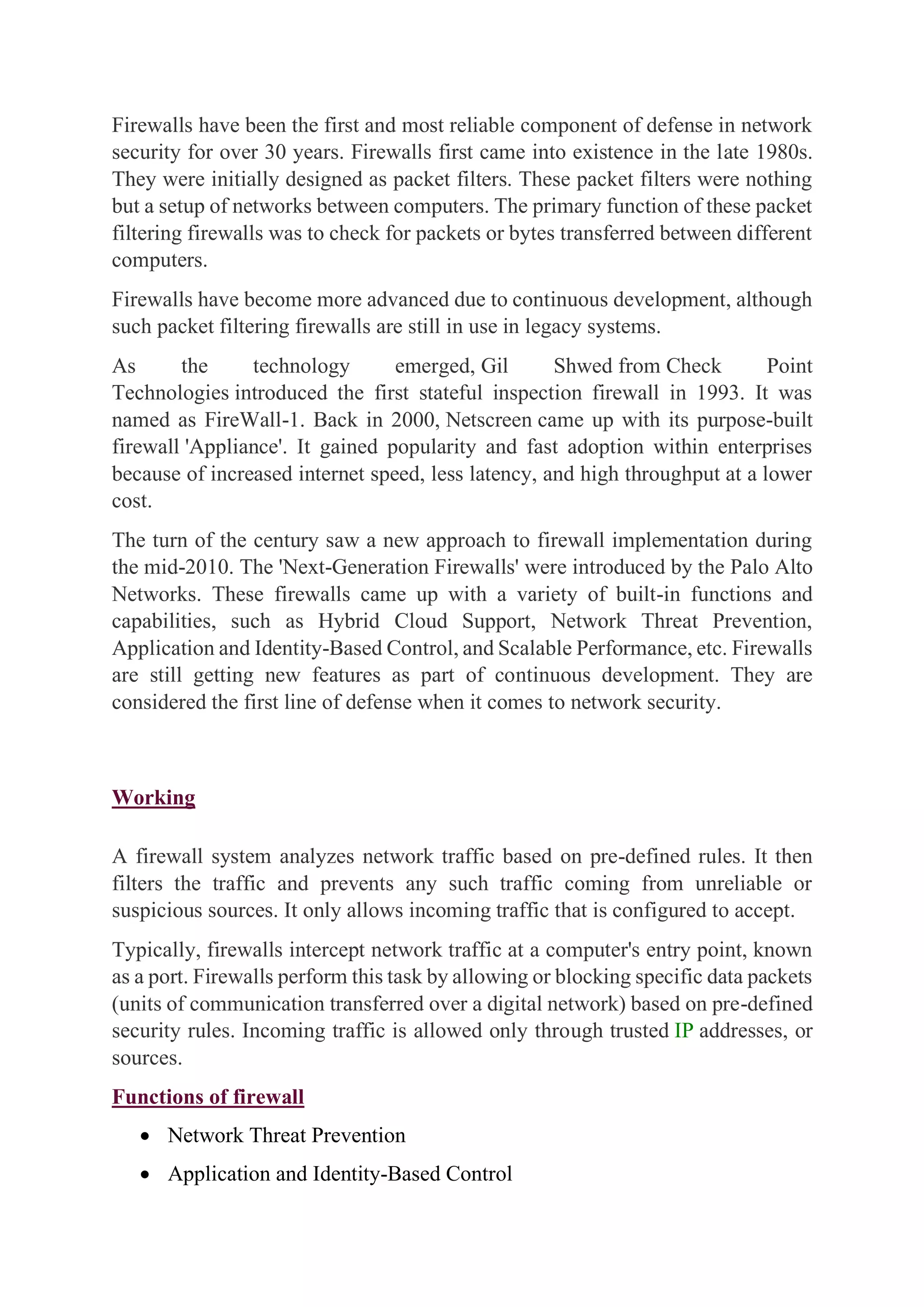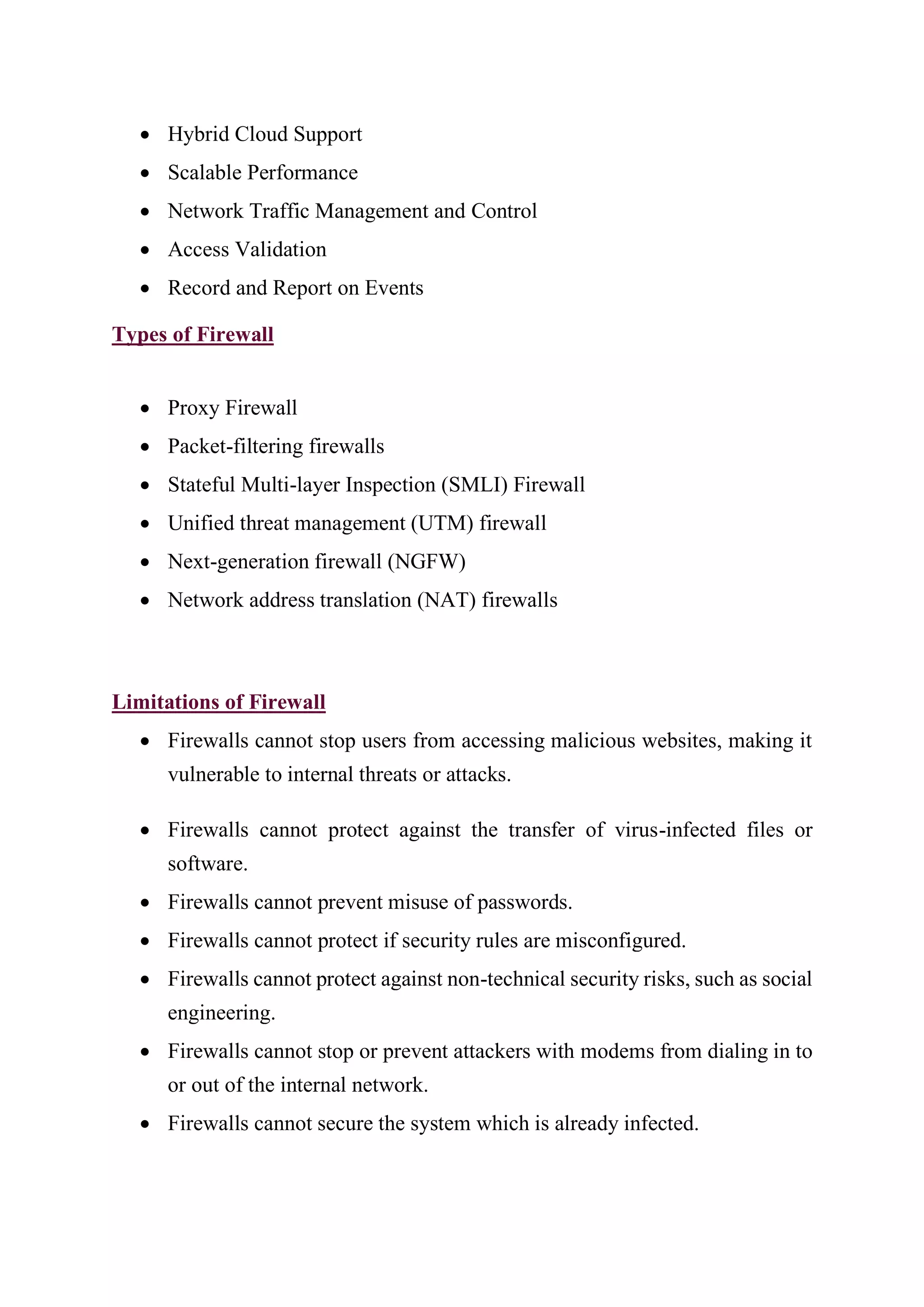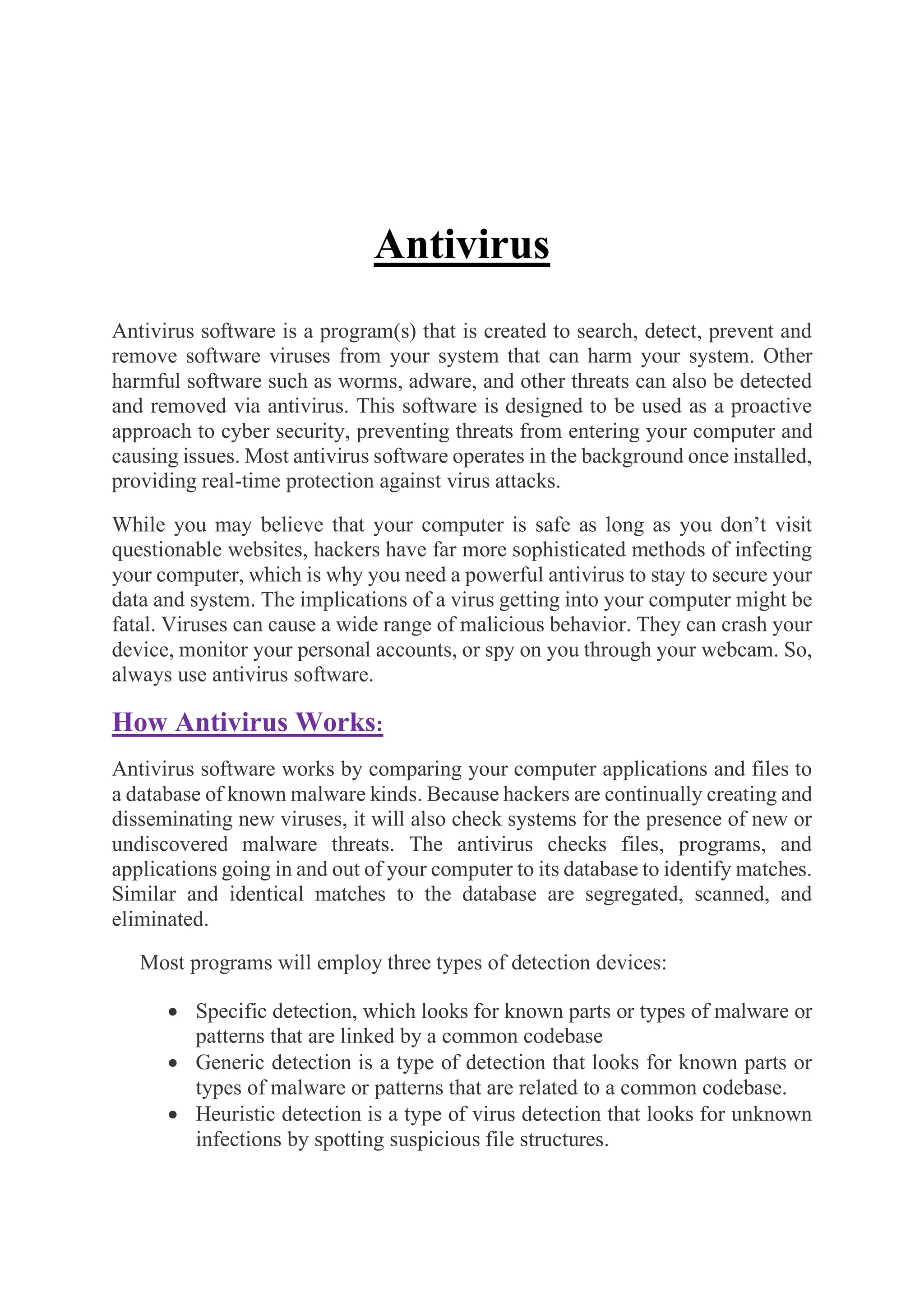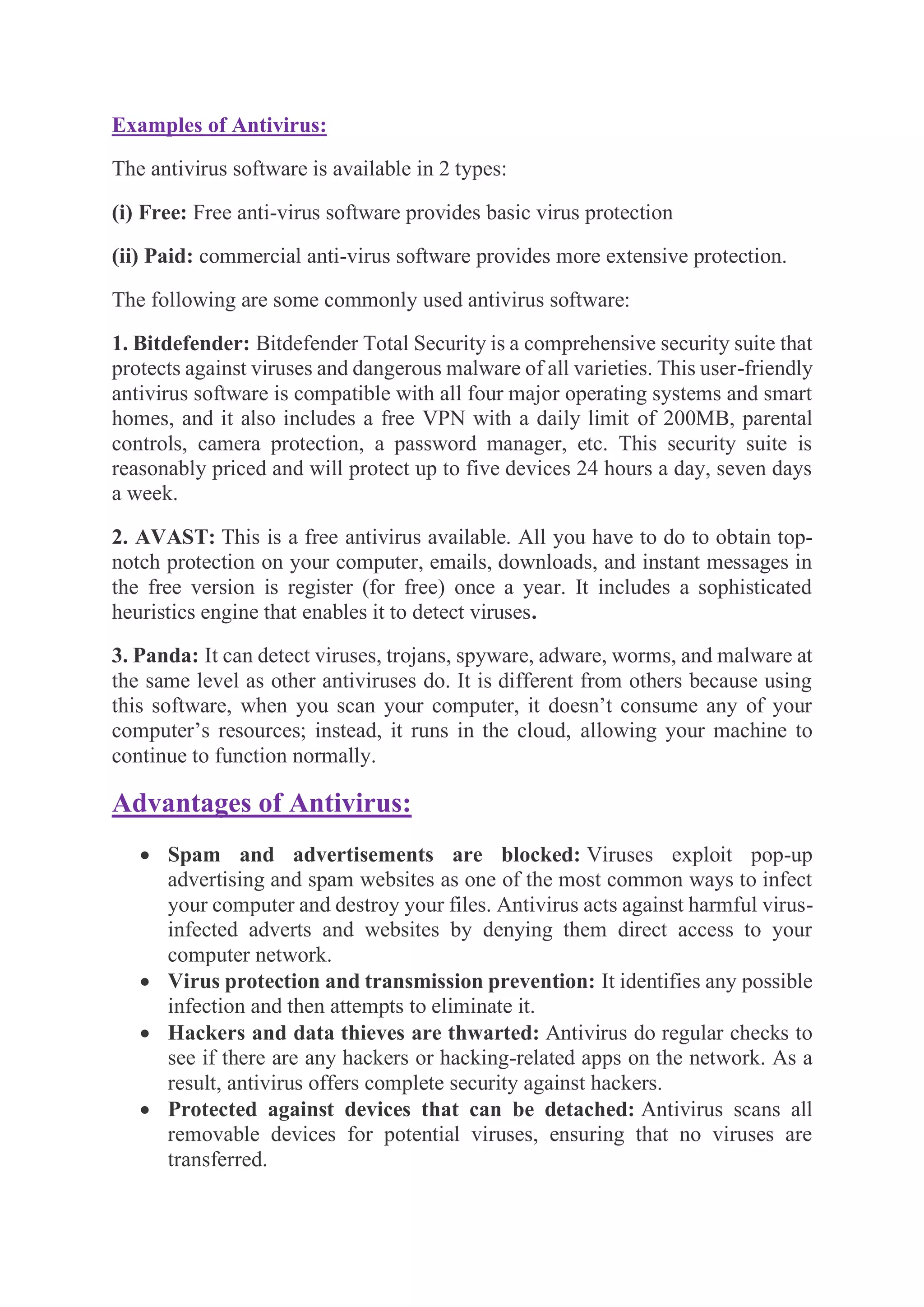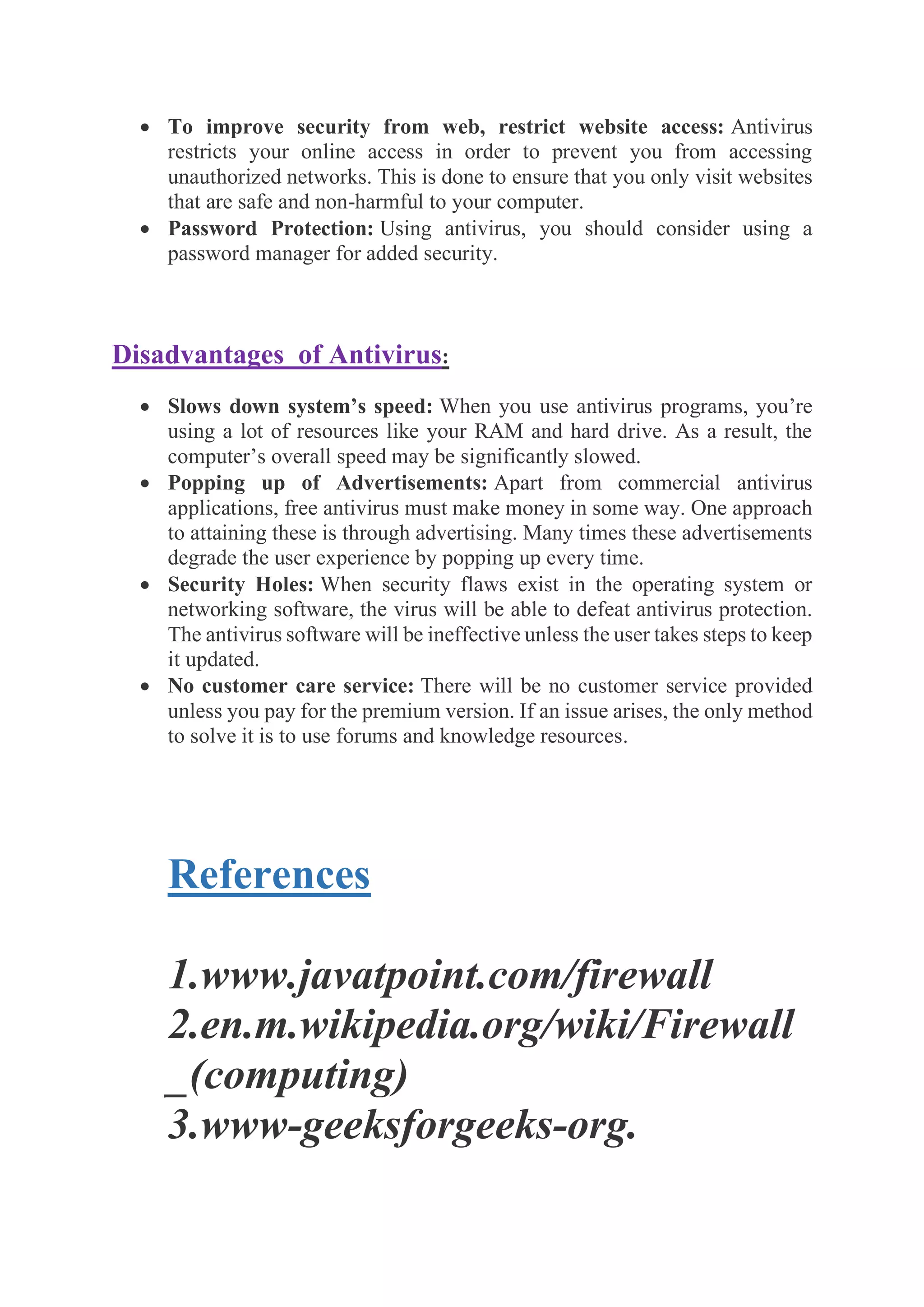Firewall and antivirus software are important preventive measures for cybersecurity. A firewall acts as a barrier between internal networks and external sources like the internet to filter traffic and prevent malicious attacks. Antivirus software searches for and removes viruses and other malware. Both work by comparing network traffic and files to databases of known threats. While they provide important protections, firewalls and antivirus have limitations like not preventing all internal or social engineering threats.

